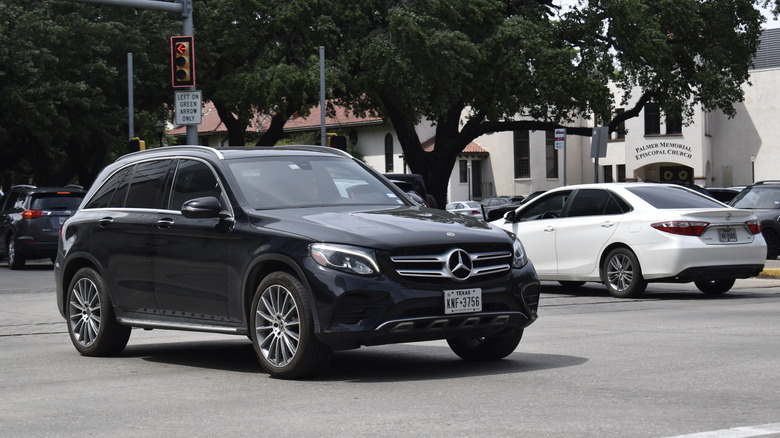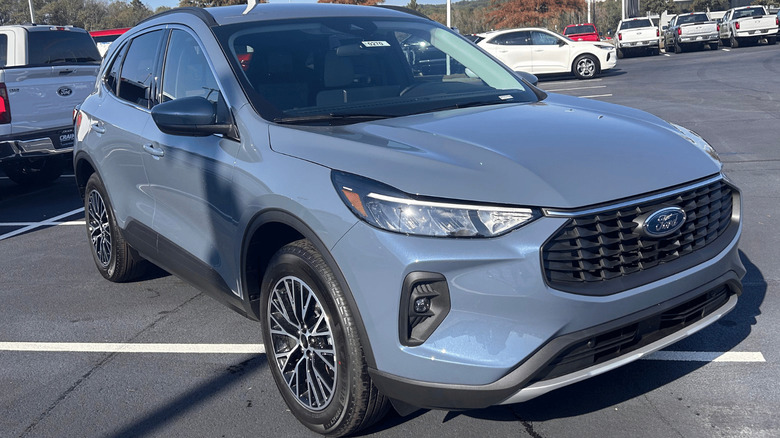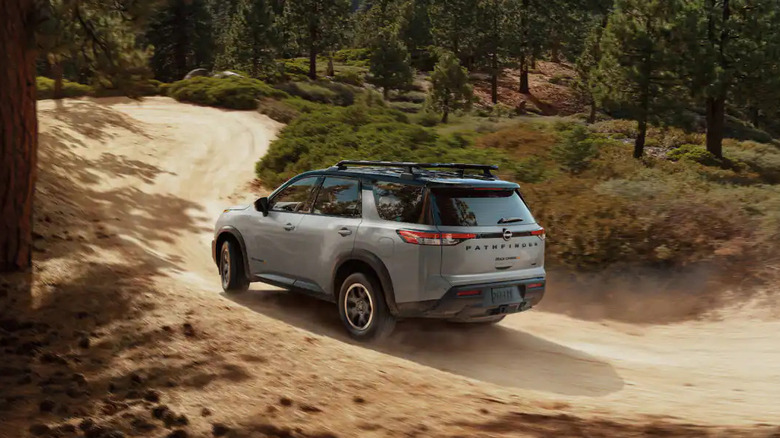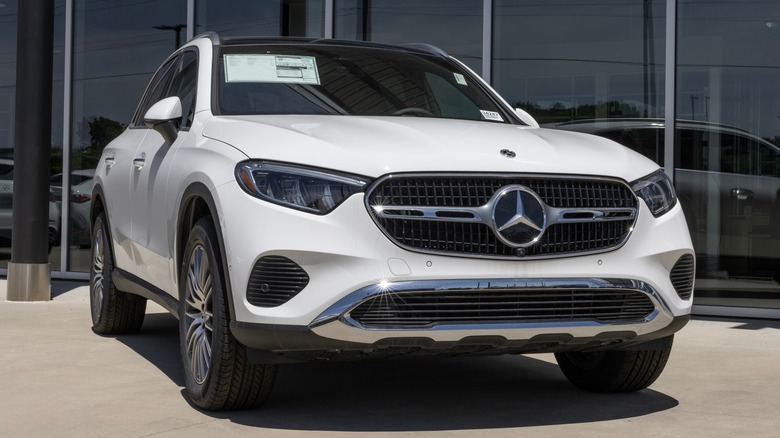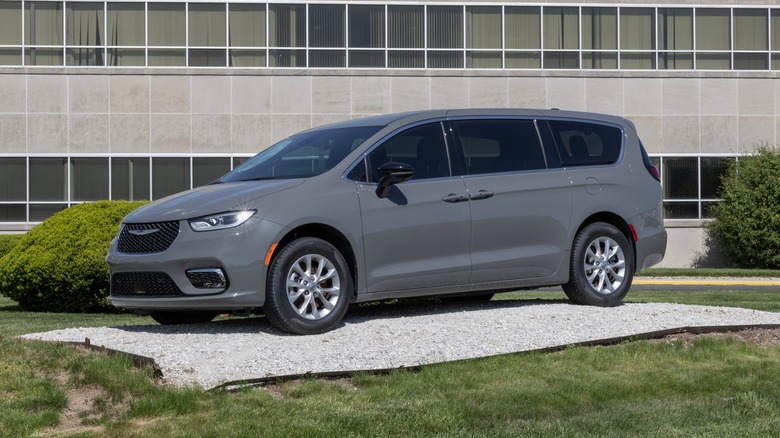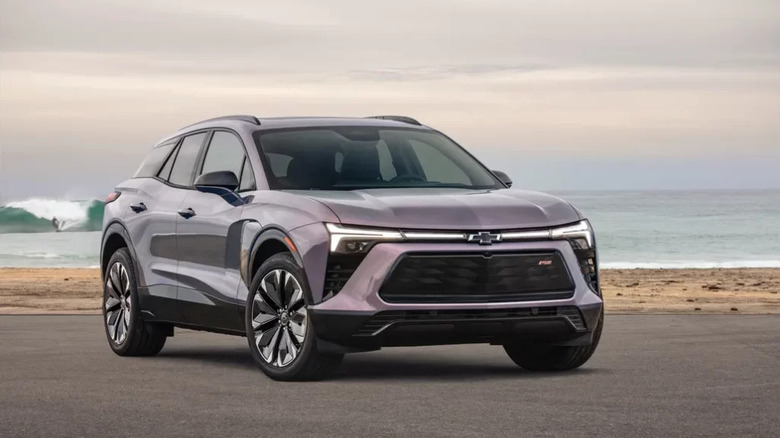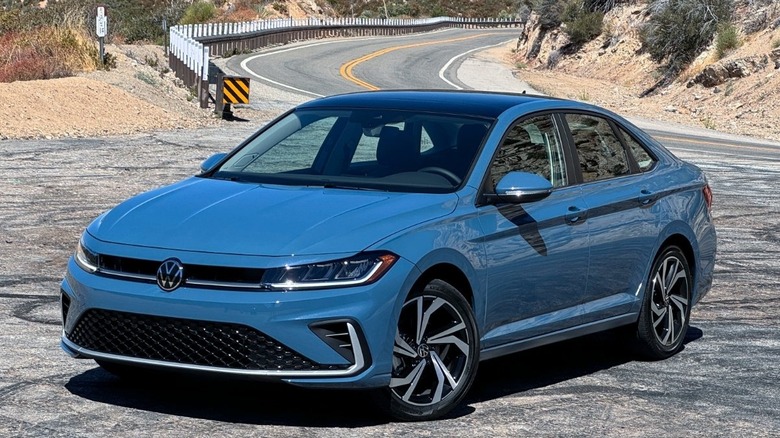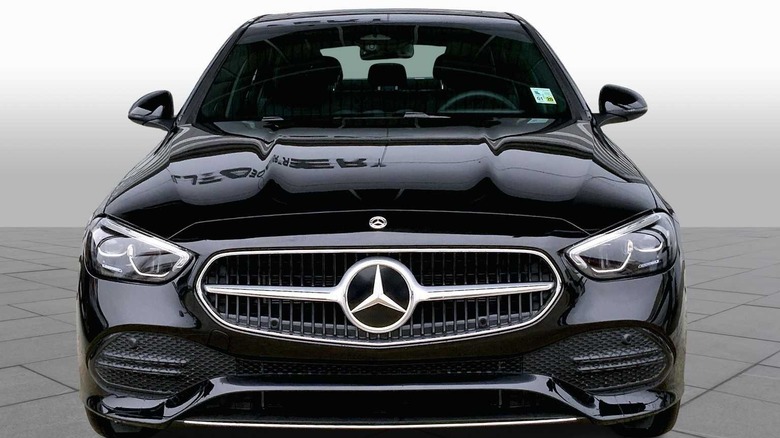Popular Cars You Should Avoid Buying, According To Consumer Reports
Some car makers are at the top of the food chain for specific corners of the auto market. If you're hunting for a cheap, reliable car, you're probably taking a look at the specs of Toyota and Buick models. If a luxury vehicle with a sporty engine suits your fancy, your attention will probably shift to foreign brands like Lexus, Mercedes-Benz, and BMW, each among the best-selling luxury brands in 2025. However, just because a manufacturer is popular doesn't mean they make the cars that check your individual boxes the best.
There's undoubtedly a reason why car makers gain success in their favored segment in the first place, and why they continue to rack up sales with each passing year. Nevertheless, driver satisfaction ultimately varies from person to person, and the reason for a car's popularity may not align with your needs. To this point, Consumer Reports recently examined some of the most popular automobile market picks, suggesting alternatives that can make drivers happier with their purchases despite their comparatively lower clout.
The reasons behind the flagging of popular car models may vary, but they're all reflective of the kinds of things you should consider before buying a hybrid vehicle. Let's take a closer look at what the most common pain points are for drivers when it comes to moving these vehicles about.
2025 Ford Escape Hybrid
The hype surrounding hybrid vehicles doesn't seem to be slowing down any time soon. For instance, Ford's Q3 numbers showed a 19.8% climb in electrified vehicle sales. More specifically, hybrid sales hit a record total of 55,177.
The reason for this uptick isn't just hype — the 2025 Ford Escape Hybrid's fuel economy puts it among the best in the hybrid SUV class. The model posts metrics of 42 mpg city and 36 mpg highway.
While this is a boon in the vehicle's locker, a few concerns can hinder driver satisfaction and reliability in the long term. Firstly, if you're a fan of classy interiors, chances are that the 2025 Ford Escape Hybrid will not be up your alley. The seating uses a cloth-and-vinyl configuration instead of leather, and the rest of the innards (from the dashboard to side panels) are cased in plastic. That gives the cabin a cheap aesthetic, especially compared to other vehicles in the same class.
The vehicle's core functionalities aren't perfect either. Earlier this year, Ford recalled over 20,000 hybrid SUVs due to a manufacturing issue with the battery. That's not the only risk that has reared its head; oil leakages and inverted rearview camera images also demanded recalls to varying degrees. In light of this, despite its popularity, the 2025 Ford Escape Hybrid's cons may outweigh the pros depending on your needs.
2025 Nissan Pathfinder
When it comes to reliability, the Nissan Pathfinder has a history that isn't too flattering. The second and third generations in particular contributed to this perception. Transmission failures were widespread; slipping gears, power loss, rough shifting, and even complete breakdowns. The engines weren't left out either — timing chain failure was another common pain point for drivers.
The nine-speed automatic transmission design introduced in the newer models saw the Pathfinder become more reliable. This fix came at a critical time for Nissan — 2021's sales in America were the lowest they had been for a decade. Sales rebounded with this solution, with 2024's numbers reporting the most Pathfinder purchases since before the pandemic.
However, despite the uptrend, the 2025 Nissan Pathfinder is not devoid of question marks. Its performance metrics aren't the best — most trims only make 284 hp, and it struggles in rough terrain, which effectively rules out off-roading if you want to keep your suspension intact. This state of affairs, combined with the lack of feedback from the steering, creates a driving experience that feels almost rudimentary.
The 2025 Nissan Pathfinder's infotainment system also leaves quite a bit to be desired. While the rest of the interior meets the comfortable expectations that come with the mid-sized SUV class, the screen runs smaller and is more dated in tech savviness than its competitors like the Hyundai Palisade.
2025 Mercedes-Benz GLC
Mercedes-Benz vehicles are typically associated with high-class luxury, and as such, drivers who buy them don't expect regular mechanical inconveniences. However, the 2025 Mercedes-Benz GLC hasn't lived up to that standard. Earlier this year, in June, the German automaker recalled over 90,000 units of its 2025 GLC rollout to combat faults with the C-pillar.
The problem is related to accident management — the pillar wasn't properly equipped to absorb impact, which increases the risk of injury in the event an occupant's head comes into contact with it during a mishap. Although recalls of such proportions aren't necessarily outliers, it's enough to raise a red flag for potential buyers.
Another area where the 2025 Mercedes-Benz GLC could use some redress to match its reputation is ride smoothness. Mercedes-Benz models are typically built with maximum driver comfort in mind, which is why it's surprising the 2025 GLC occasionally struggles with some elements of riding. For example, while the brakes are fully operational and reliably bring the vehicle to a dead stop in a pinch, some models report sluggishness when slowing down after applying pressure. This takes a while to get used to, which disrupts the driving experience to a degree.
There's also the topic of the infotainment system. While the GLC features a massive display, it can prove difficult to understand — and the features it controls are duplicated in awkwardly placed touch-sensitive buttons on the steering wheel.
2025 Chrysler Pacifica Hybrid
Many attribute the creation of the modern minivan to Chrysler, so it's no surprise that the 2025 Pacifica Hybrid is among the most popular cars in the genre. However, in the Hybrid's case, that popularity hasn't necessarily translated to a best-in-class driving experience.
The PHEV has undergone a series of recalls; problems with the brakes, hydraulics, and airbags have plagued the vehicle. Specifically relating to the brake and hydraulics issue, one of the recall filings stemmed from an improperly tightened bolt — one that was responsible for securing the front brake caliper. This could give rise to "reduced steering control, a brake fluid leak, and a loss of front brake function".
While this particular issue resulted in the manufacturer calling back just eight minivans, the air bag proved to be a far more widespread problem for Chrysler. In late June, the automaker recalled over 250,000 Pacifica and Voyager units (210,000 of which are Pacificas) from the 2022 to 2025 model years to replace faulty side curtain airbags.
In terms of actual car features, Stow 'n Go second and third-row seating has become synonymous with the Chrysler brand over the years; it's even featuring in futuristic models like Stellantis' electric Halycon concept. However, that status has changed for the second row in the 2025 Chrysler Pacifica. This space erasure, along with the potential for technical problems, should encourage buyers to carefully weigh their options.
2025 Chevrolet Blazer EV
The Chevrolet Blazer EV trim has had its fair share of recalls; the 2024 rollout in particular registered three in just six months. Software issues ran amok, and concerns over structural integrity did some damage to the model's sales numbers, albeit on a smaller scale.
The 2025 version has fared significantly better than its predecessor in this respect, with a solitary recall-worthy issue since its market launch. The callback was targeted at addressing electrical problems with the parking brake due to the design of the wiring harness. Some drivers reported being unable to shift out of park or receiving service warnings, which led to General Motors recalling over 40,000 Chevrolet Blazer EVs — about a quarter of which are from the 2025 model.
While the downtrend in problems is encouraging, the consistent appearance of faults should raise some red flags for buyers. Recall data aside, the 2025 Chevrolet Blazer EV also has a few shortcomings that hinder optimal driver satisfaction. For instance, most AWD models of the EV trim have a range of less than 300 miles, reporting an estimated one-charge distance of 283, though in our first drive of the SS trim we found that are exceptions.
Compared to competitors in the electric SUV genre with a similar MSRP like the Cadillac Lyriq, the 2025 Chevrolet Blazer EV underperforms in this regard. Similarly, although the infotainment system comes equipped with standard navigation apps, Apple CarPlay and Android Auto are conspicuously absent from its offerings. If you're a tech enthusiast, you might want to consider other options.
2025 Volkswagen Jetta
If you're a minimalist hunting for a small car to get you from A to B reliably, chances are you've taken a look at Volkswagen models. They're not the flashiest, but they'll get the job done.
In the case of the 2025 Volkswagen Jetta, the automaker gave the model a facelift, implementing a sleeker design than the 2022-2024 versions. The interior, despite its stubbornly plastic frame, also got outfitted with a revised styling for the dashboard, and climate control buttons joined the ecosystem. The summary of the good news is that the Jetta maintained its fuel efficiency and roomy interior, and it got a little bit fancier.
However, the core functionalities barely changed. That's been a defining — if unflattering — characteristic of the Volkswagen Jetta in the last few years. The 1.5-liter turbocharged inline-four engine from the previous generation persists for all non-GLI trims of the 2025 model, which makes 158 hp. That mark, for a turbocharged engine, lags behind competitors in the same class and barely beats non-turbo options like the 2.0-liter non-hybrid Honda Civic.
To make things worse, driving enthusiasts have lost a piece of history with the 2025 Volkswagen Jetta, as manual transmission is now only available in the GLI trim. The comparatively sluggish speed, coupled with the lack of feedback in the steering, might deter you from purchasing the car — go through our 2025 Volkswagen Jetta review to see for yourself.
2025 Mercedes-Benz C-Class
Like the GLC, the 2025 Mercedes-Benz C-Class runs into a handful of issues that are uncharacteristic of the German manufacturer's repute. That's not to say it doesn't retain some of the tradition the automaker has inculcated; the cabin design is as detailed and roomy as one would expect from a luxury sedan.
However, it's in the intricacies of the driving experience that the C-Class starts to reveal chinks in its otherwise plush armor. In terms of the interior, the 2025 version is advertised to be more spacious than its predecessor by about 2.5 inches. This difference mostly makes itself known in the front legroom space. The rear is a different story — it can comfortably seat most adults, but the headroom allowance starts to disappear for taller passengers.
With respect to the technical details of driving the C-Class, more pressing issues pop up. The brakes, for example, share the same delayed, squishy feel that shows up in the GLC. That's not the only brake-specific problem: the auto braking system sometimes engages randomly with no discernible threat in the surroundings mandating deceleration. It stands to reason that a tangible accident risk that comes from this.
Beyond these reported braking inconveniences, there's also the subject of a numb steering feel, despite the handling capabilities continuing to impress. While some of these points may seem nitpicky, it's important to note potential red flags given the top-dollar MSRP the 2025 Mercedes-Benz C-Class commands.
